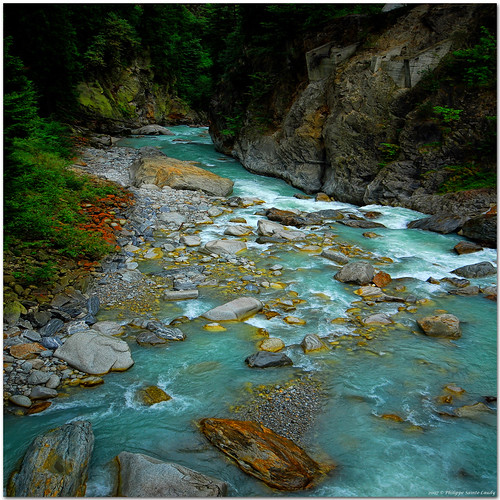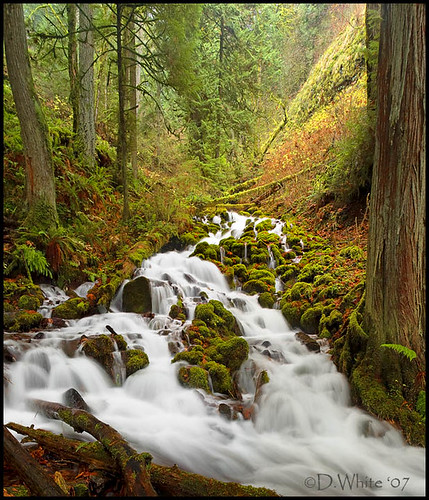 Edward Grant. Science and Religion, 400 B.C.-A.D. 1550: From Aristotle to Copernicus. Greenwood Guides to Science and Religion Series. Westport: Greenwood Press, 2004.
Edward Grant. Science and Religion, 400 B.C.-A.D. 1550: From Aristotle to Copernicus. Greenwood Guides to Science and Religion Series. Westport: Greenwood Press, 2004.
.
Reviewed by: Anna Marie Roos, Wellcome Unit, Oxford University.Published by: H-Ideas (October, 2007).
Objective and Subjective Insights: Theology, Natural Philosophy, and the Medieval World View
Medievalist Edward Grant has devoted much of his career to analyzing to what extent modern scientific culture had its origins in the work of medieval theologians. Countering the popular perception that science and religion have always been at historical odds, a view promulgated by Andrew Dickson White's A History of the Warfare of Science with Theology in Christendom (1896 and still in print), Grant has convincingly demonstrated that the medieval Church was favorably disposed towards natural philosophy, using its principles in theological discussion and analysis.
Science and Religion, 400 B.C.-A.D.1550: From Aristotle to Copernicus is a lucid and erudite synthesis of Grant's past work. Part of the Greenwood Guides to Science and Religion, this volume is designed as an introduction to laymen and students so they might understand how religious traditions from throughout the globe have interacted with scientific disciplines. Hence, Grant devotes the last chapter of his piece to an erudite consideration of the relationships between science and religion in Byzantium as well as in the medieval Islamic world. The books in the series also provide primary source documents, an annotated bibliography, and a timeline of significant events. As a testament to its popularity for history of science pedagogy, Grant's particular volume has also been republished in paperback by John Hopkins University Press (2006).
Grant begins his largely successful survey with the claim that the "real beginnings of science and religion commenced with Plato and his student Aristotle" (p. 1). Although one could argue that the pre-Socratics in Miletus began such discourse, Grant is right to devote much of the first part of his work to Aristotle's overweening influence in the science-religion dialogue. Aristotle's conception of the Prime Mover which ultimately caused all interaction and change by being an object of desire and love, the Stagyrite's spatial and material distinction between the heavenly and sublunar realms, and his teleological cosmos were all part of a metaphysics that became a "dominant analytical tool" when applied to the Christian God in late antiquity and the early Middle Ages (p. 19). Particularly strong is Grant's overview in chapter 2 of the sheer scope of Aristotle's corpus of work as well as his techniques for analyzing philosophical problems.
Grant then analyzes early Christianity, demonstrating that the early Church fathers studied natural philosophy largely to comprehend the Christian faith, rather than for the sake of knowledge itself. Natural philosophy was a handmaiden to theology. Since God had "created the world as an essentially self-operating entity" functioning by its own laws, it was thought "the mind must penetrate nature to find God" (p. 135). Grant takes the time and care to introduce students to lesser-known theologians such as Justin Martyr, Clement of Alexandria, and John of Damascus, and recounts their attempts to reconcile pagan Greek philosophy with Christianity, rather than just jumping ahead to St. Augustine and his assimilation of Neo-Platonism with Christianity.
In chapter 4, there is also an excellent section on early hexameral literature (commentary on the six days of creation). Grant notes that the problems concerned with the creation of light in the first day (optics), the role of astronomy and astrology in the events of day two, and meteorological analysis of the third day when God made the elements and sublunar region demonstrate the use of hexameral literature as a important and logical means for theologians to discuss natural philosophy. Further, Grant's explanation of why logic became a major subject of study in the eleventh century, his analysis of the extent to which logic was applied to medieval questions of divine revelation, and the role logic played in later struggles between science and religion is also particularly noteworthy. Undergraduates reading this will understand what questiones, scholasticism, and the sententiae of Peter Lombard were all about, mostly likely to the great relief of their instructors.
After a brief discussion of the Latin encyclopedists in the fifth to eighth centuries, the work turns to the twelfth-century medieval Renaissance. As this is a work of science and religion, it is natural that Grant would concentrate upon medieval scholasticism and the rise of universities, as well as the influx of Greco-Arabic natural philosophy and the bearing it had on theological deliberations. However, in his contextual section for the twelfth century, I was a bit surprised that there was little discussion of technological innovations other than the horse collar and three-field system of crop rotation. Since one of its book's purposes is to show the harmony of medieval philosophy and religion with the study of the natural world, it couldn't hurt to mention that medieval engineers created innovations such as the water wheel and water pumps, the lateen sail, or most importantly, the mechanical clock. The mechanical clock was thought to have been invented in 996 to call monastic brethren to prayer by Brother Gerbert, later Pope Sylvester II (999-1003 A.D.), in itself a nice confluence of applied sciences and religious purpose.
I was, however, pleased to see a thorough section describing the work of what Tina Stiefel has termed the "impious men" of the twelfth century--William of Conches, Thierry of Chartres, and Adelard of Bath.[1] This trio attempted to create a rational methodology for the investigation of nature well before the appearance in the West of the Aristotelian corpus and the university. When Aristotle did become part and parcel of the medieval university, their methodology contributed to powerful changes in the relationship between science and religion in the following two centuries, the subject of the masterfully written chapters 6 and 7.
In the thirteenth century, the extensive application of logic and region in the new universities to divine questions produced tensions between faculties of arts and theology in the medieval university, as natural philosophy became more than theology's handmaiden. Utilizing the 1277 papal condemnation of heretical opinions at the University of Paris as a backdrop, Grant shows how the condemned precepts included ideas of the eternity of the world, and limitations on God's power. These precepts reflected the natural philosophers' use of pagan philosophy and reasoned speculation about creation, both of which were seen as threatening theology's primacy as "queen of the sciences." As Grant astutely comments, "The thirteenth century laid a foundation for the interrelations between science and religion in the fourteenth and fifteenth centuries…. Theology and the power of the church were sufficient to curb and limit the ambitions of the arts masters, who sought … to give free reign to their efforts to interpret the physical cosmos in straightforward Aristotelian terms, unencumbered by theological restrictions and limitations. As the dust settled in the fourteenth century, it became obvious that theologians had an enormous degree of latitude to use natural philosophy … as they pleased in their theological treatises…. By contrast, arts masters usually sought to avoid introducing theology into their commentaries and questions on the books of Aristotle's natural philosophy" (p. 189).
Using examples from his previous work, Grant analyzes the treatises of Jean Buridan to show the limitations arts faculty in the thirteenth century experienced in their speculative work, sometimes with unexpected consequences.[2] If God could indeed do anything in his power, Buridan reasoned God could create a vacuum within or outside of the world, despite Aristotle's denial of the possibility. Albert of Saxony also speculated if a "body could move in a vacuum that God had supernaturally created," which led other scholars such as Nicolas Oresme and Thomas Bradwardine to consider rectilinear motion as an absolute motion independent of place (p. 196). In a lovely example of the interaction of science and religion, Grant demonstrates to what extent the condemnation of 1277 had unexpected effects on the development of physics.
As the fourteenth century progressed however, the restrictions of the 1277 condemnation did not last. Theology became more of an analytic discipline, using the logical methods of the natural philosophers. Interest in divine infinity was analyzed using tools concerned with the infinite divisibility of a mathematical continuum. Grosseteste's work on optics used theories of illumination to analyze the intensification of grace, and the Mertonian school at Oxford in the 1330s and 1340s "measured" subjective qualities like justice and honor quantitatively.[3] The one area of theology closed to such analysis was that related to revelation, such as the Trinity and the Eucharist. Their inherent paradoxes were regarded beyond the reach of reason and logic.
From the thirteenth to the fifteenth centuries, the revelations of Holy Scripture and where they contradicted observed natural phenomena were also accommodated, the mysteries as the Bible seen as allegorical. Despite the later clash (Grant calls it a "debacle") in the seventeenth century over Galileo's adoption of Copernicus' heliocentrism in contradiction to biblical geocentrism, medieval philosophers had little interest to "convert the Bible into a book that allegedly contained the secrets of nature and its operations" (p. 224). So far, so good. In these areas of Grant's expertise, this book shines and demonstrates to its readers the interaction between science and religion in the medieval period with erudition. But I did note a few omissions. First of all, Copernicus and his significance are given very short shrift (approximately six to eight sentences scattered throughout the book). Perhaps the Copernican debt to earlier belief systems such as the cult of Pythagoras and Neo-Platonism could have been covered more thoroughly to foreshadow the growing influence of Plato in the Renaissance. This approach may have not fit into as neat of a pattern or argument, but the volume does claim to end with the Copernican hypothesis which perhaps should do more than mark the "beginning of the end for the medieval worldview" (p. 1).
Secondly, the choice of primary sources, while offering some excellent selections, starts with Roger Bacon and ends with Nicolas Oresme, and could have been a bit more comprehensive. If the book is used as a pedagogical tool, primary sources from ancient world and the beginnings of the early modern period should be represented.
Third, Grant then claims in his last chapter that the division of the medieval university into faculties of arts and theology foreshadowed the later division in Western societies of church and state, and that was a very good thing for science indeed.[4] For this reader, the Galileo affair which helped precipitate this division was more of a tragedy then something that resulted in an ultimate good. As an early modernist, it seems to me that the church and state were intertwined for a very long time in a complex dialogue which resulted in both benefits and tragedies; in the human condition, it seems realistically one cannot have one without the other. Galileo was condemned by the Church being caught in the political snares of the Counter-Reformation, but he also benefited from the knowledge of its Jesuit astronomers and mathematicians. As Wallace has demonstrated, Galileo's very lecture notes from his student days at the University of Pisa had as their source the lectures of the Jesuits at the Collegio Romano, considered the best in their field.[5] Copernicus, who inadvertently started the whole firestorm, was a church canon, whose motivation for his science was often frankly quite mystical and precipitated a watershed in thought. In the early modern period, the sense of awe at nature and a celebration of scientific discovery were not incompatible with a religious worldview, nor is that necessarily the case now. But that is getting into a wholly different debate outside the scope of this review.[6]
Nonetheless Grant's book is very fine and a pleasure to peruse. For those who want or need to understand the fascinating and often surprising world of Western medieval religion and its interaction with natural philosophy, this book is the one to read. I highly recommend it.
Notes
[1]. Tina Stiefel, "'Impious Men'": Twelfth-Century Attempts to Apply Dialectic to the World of Nature," Annals of the New York Academy of Sciences 441, no. 1 (1995): 187-204
[2]. Edward Grant, Much Ado about Nothing: Theories of Space and Vacuum from the Middle Ages to the Scientific Revolution (Cambridge: Cambridge University Press, 2004).
[3]. Grant here relies on the work of Edith Sylla, "Medieval Quantifications of Qualities: The "Merton School," Archive for History of Exact Sciences 8, nos. 1-2 (1971): 9-39.
[4]. Grant's conclusion seems a variation of Steven Jay Gould's concept of science and religion being described as "non-overlapping magisteria" (NOMA), which each concerns themselves with fundamentally separate aspects of human experience, coexisting peacefully when each stays within its own domain.
[5]. William A. Wallace, Galileo and his Sources: The Heritage of the Collegio Romano in Galileo's Science (Princeton: Princeton University Press, 1984); James M. Lattis, Between Copernicus and Galileo: Christoph Clavius and the Collapse of Ptolemaic Cosmology (Chicago: University of Chicago Press, 1994).
[6]. For the recent state of affairs, see George Johnson, "A Free-for-All on Science and Religion," New York Times, November 21, 2006.
.
















